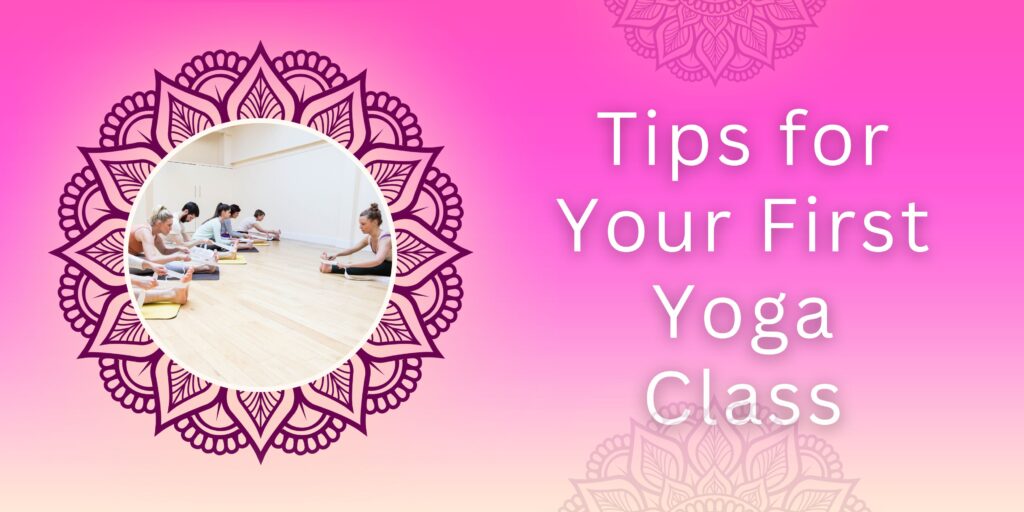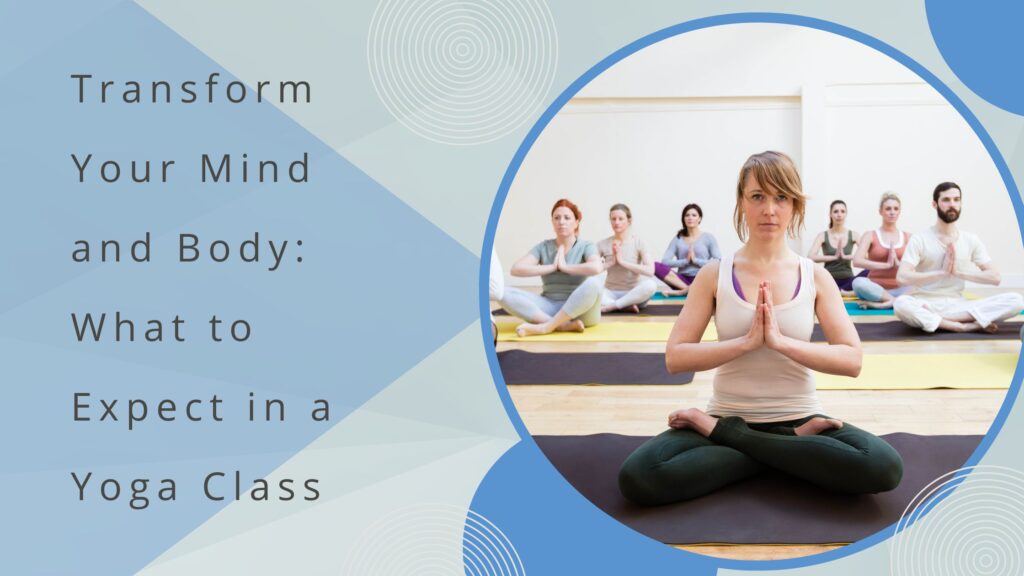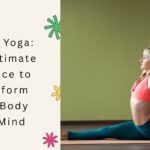In today’s fast-paced world, stress, anxiety, and physical tension have become part of everyday life. More and more people are seeking ways to restore balance—mentally, physically, and emotionally. One proven, time-honored solution? Attending a yoga class. Whether you’re a complete beginner or looking to deepen your practice, a structured yoga session can offer powerful benefits that go far beyond the mat.
But what exactly happens in a yoga class? And how do you choose the right one? This guide will walk you through everything you need to know—from what to expect in your first yoga session to how each component of the class serves your overall well-being. If you’re ready to take the first step toward a healthier, more mindful life, keep reading.
A yoga class description should effectively and succinctly communicate the class’s purpose, intended participants, and key benefits. It should also provide details about the instructor, the style of yoga being taught, and what attendees can anticipate during the session.
Table of Contents
Why Take a Yoga Class?
Before diving into the structure of a typical yoga session, let’s explore why yoga classes have become one of the top-searched wellness trends worldwide. According to Google Trends and health forums, searches for “yoga for beginners,” “benefits of yoga,” and “yoga classes near me” have skyrocketed in recent years—and for good reason.
Here are just a few scientifically-backed benefits of attending a yoga class:
- Reduces stress and anxiety
- Improves flexibility and strength
- Boosts mental clarity and focus
- Promotes better sleep
- Supports heart health
- Enhances posture and body awareness
Unlike workout routines that focus solely on the body, yoga offers a holistic approach—uniting breath, movement, and mindfulness.
The Flow of a Typical Yoga Class
Understanding the structure of a yoga class can help you feel more confident and prepared. While different styles (like Vinyasa, Hatha, or Restorative) may vary, most well-rounded yoga classes follow a similar flow. Here’s what you can expect.
1. Welcome & Intention Setting (5 Minutes)
Every great yoga class begins with presence. As you settle on your mat, your instructor will guide you to tune in—both to your breath and your body. This is where you set an intention for your practice. It could be anything: gratitude, strength, focus, or simply being present.
This mental shift helps transition from the chaos of the day into a more grounded, intentional state of being.
2. Breathwork (Pranayama) – The Power of Breath (5 Minutes)
Breath is the foundation of every yoga class. You’ll be introduced to pranayama techniques, which are specific breathing exercises designed to control and deepen your breath. Common practices include:
- Ujjayi (victorious breath)
- Nadi Shodhana (alternate nostril breathing)
- Deep abdominal breathing
Controlled breathing not only enhances lung function but also reduces cortisol levels and calms the nervous system. It’s no wonder so many people search for “breathwork in yoga classes” when exploring how yoga promotes mental wellness.
3. Warm-Up: Preparing the Body (10 Minutes)
Next comes the warm-up. This section includes gentle stretching and mobility exercises to loosen your joints and muscles. Think neck rolls, cat-cow stretches, and light spinal movements.
You’ll often transition into Sun Salutations (Surya Namaskar)—a flowing series of poses that link breath with movement and build heat in the body.
This phase sets the stage for deeper postures by enhancing blood flow and reducing the risk of injury.
4. Standing Poses: Building Strength and Balance (15–20 Minutes)
This is typically the most dynamic part of a yoga class. Standing poses help you develop balance, focus, and strength. Examples include:
- Warrior I & II (Virabhadrasana)
- Triangle Pose (Trikonasana)
- Tree Pose (Vrksasana)
- Extended Side Angle (Utthita Parsvakonasana)
These foundational postures also target large muscle groups and help you connect with your body’s alignment and stability.
5. Seated and Reclining Poses: Deepening the Practice (10–15 Minutes)
After the peak effort of standing poses, the class transitions to the floor. These postures focus on flexibility, especially in the hips, hamstrings, and spine.
Common poses include:
- Seated Forward Fold (Paschimottanasana)
- Pigeon Pose (Eka Pada Rajakapotasana)
- Supine Twist
- Boat Pose (for core engagement)
This part of the yoga class is where your body begins to relax, and your breath naturally deepens again.
6. Cool Down and Stretch: Easing Into Stillness (5–10 Minutes)
The cool-down phase is gentle and restorative. Poses like Happy Baby and Legs-Up-the-Wall help soothe the nervous system, reduce muscle tension, and promote inner calm.
Many people who attend yoga classes for stress relief or recovery particularly look forward to this part.
7. Savasana: The Final Relaxation (5–10 Minutes)
Every yoga class ends with Savasana, also known as corpse pose. You lie flat on your back, eyes closed, and surrender completely.
This may seem like a passive pose, but it’s one of the most important. It allows your nervous system to fully integrate the benefits of the practice.
Teachers may guide you through a body scan or a brief meditation to anchor a deep sense of peace.
8. Closing the Class: Gratitude and Reflection (2–3 Minutes)
Finally, the instructor invites students to bring gentle movement back into the body, come to a seated position, and close the class with gratitude. Many yoga classes conclude with the word “Namaste”—a traditional salutation honoring the light in each of us.
You may also hear a short quote or affirmation to carry the intention of the practice into your daily life.
Read More: Power Yoga: The Ultimate Practice to Transform Your Body and Mind
Read More: Surya Namaskar: The Ancient Yogic Ritual to Transform Your Body and Mind

Tips for Your First Yoga Class
If you’re new to yoga, don’t worry—you’re not alone. Millions are searching daily for “beginner yoga classes” or “how to start yoga.” Here are a few tips to help you feel more comfortable:
- Arrive early to set up and get familiar with the space.
- Wear comfortable, breathable clothing.
- Bring a yoga mat, water bottle, and towel.
- Listen to your body and don’t push beyond your limits.
- Stay consistent—even one class a week can create lasting change.
Choosing the Right Yoga Class for You
With so many options available—Hatha, Vinyasa, Power Yoga, Yin, and more—it’s important to find the right class for your goals.
Here’s a quick guide:
| Goal | Recommended Yoga Class |
| Stress Relief | Restorative or Yin Yoga |
| Strength & Cardio | Power Yoga, Vinyasa Flow |
| Flexibility | Hatha or Gentle Flow |
| Meditation | Kundalini or Yoga Nidra |
| Beginners | Beginner Hatha or Slow Flow Yoga |
Final Thoughts: Why You Should Join a Yoga Class Today
A yoga class isn’t just another workout—it’s an invitation to reconnect with yourself. It offers a safe, welcoming space to breathe deeply, move mindfully, and find peace within.
Whether you’re trying to ease stress, build strength, or simply take time for yourself, there’s a yoga class out there for you. So why wait?
Roll out your mat, take a deep breath, and begin your journey today. Your body, mind, and soul will thank you.
FAQ:
Q. What should I bring to my first yoga class?
Ans: For your first yoga class, it’s recommended to bring a yoga mat, a water bottle, a small towel, and wear comfortable, stretchable clothing. Some studios may offer mats and props, but bringing your own ensures cleanliness and comfort. Also, come with an open mind and a willingness to learn—no experience necessary!
Q. Is yoga suitable for beginners with no flexibility?
Ans: Absolutely! You don’t need to be flexible to join a yoga class—that’s one of the main reasons people practice yoga in the first place. Beginner-friendly classes focus on safe movement, breathwork, and gradually increasing flexibility. Instructors often offer modifications, so you can work within your range of motion.
Q. How often should I attend a yoga class to see results?
Ans: If you’re consistent, attending a yoga class just 2–3 times a week can produce noticeable improvements in flexibility, strength, and stress reduction within a few weeks. However, even one session per week can have positive effects over time. The key is regular practice, not perfection.
Q. What type of yoga class is best for stress relief?
Ans: For stress relief, look for a yoga class labeled as Restorative Yoga, Yin Yoga, or Gentle Hatha. These styles focus on deep stretching, relaxation, and breath awareness. Classes with guided meditation or extended Savasana are especially helpful for calming the nervous system and reducing anxiety.
Q. Can I do a yoga class at home, or should I go to a studio?
Ans: Both options have benefits! Studio yoga classes provide in-person guidance, a supportive community, and access to props. However, online yoga classes are a great choice for flexibility, especially if you have a busy schedule. Many platforms offer beginner to advanced levels, so you can practice safely at home with proper instruction.
Q. What is yoga class for?
Ans: Yoga strengthens the core abdominal muscles and enhances overall flexibility. A key element of yoga is the connection with the breath—each movement is paired with a breath, fostering mindfulness and self-awareness. This practice promotes rejuvenation, calmness, and improved mental focus.
Q. What is the purpose of yoga class?
Ans: Yoga unites the body and mind through three core elements: movement, breathing, and meditation. It offers numerous physical and mental health benefits, such as enhanced posture, flexibility, strength, balance, and body awareness.
Q. What is yoga course?
Ans: Yoga courses are structured programs designed to teach individuals the principles, practices, and philosophy of Yoga. The syllabus typically includes a range of yoga postures, emphasizing proper alignment, breathing techniques (pranayama), and the benefits associated with each pose.
Declaration Note:
We use third-party videos and images on https://yogavidhi.com/ for educational and illustrative purposes. All rights belong to their respective owners. No copyright infringement is intended.



